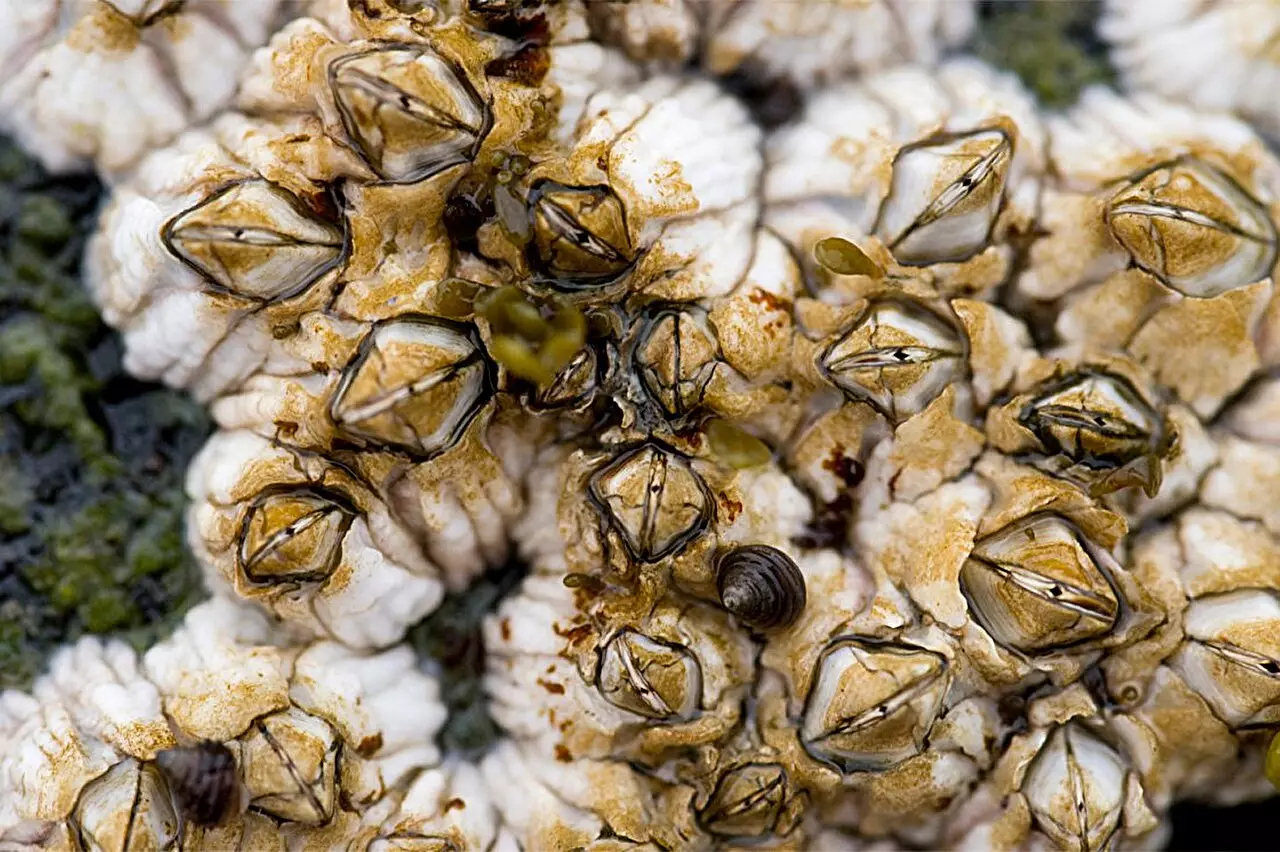Biofilms are complex assemblies of various microorganisms, predominantly bacteria and fungi, that adhere to surfaces and constitute a significant challenge in both clinical and industrial environments. These protective communities make bacteria more resilient and less susceptible to traditional antibiotic treatments, which primarily target active bacteria. In medical settings, biofilms are often associated with chronic wounds, prosthetic devices, and infections that resist standard therapies. Recognizing the implications of biofilms in wound care and industrial hygiene highlights the urgency for innovative solutions to combat their persistence.
Interestingly, a recent study has drawn inspiration from marine life, particularly barnacles, which employ naturally occurring substances to cleanse the surfaces of rocks from bacterial contamination before they secure themselves with a robust adhesive. This approach sparked researchers’ curiosity to mimic this natural mechanism using synthetic polymers designed by bioengineering scholars, including Dr. Abraham Joy of Northeastern University. The goal was to delay or reduce bacterial adhesion and biofilm formation by disrupting the interactions between the biofilm and the surfaces it clings to. In essence, the team sought to simulate the barnacle’s effective cleaning strategy towards battling bacterial biofilms in human tissues and various materials.
The bioengineering team’s research culminated in the development of a synthetic polymer capable of clearing biofilms, as detailed in their publication in the *Journal of the American Chemical Society*. Their findings revealed that this polymer could eradicate up to 99% of biofilm associated with *Pseudomonas aeruginosa*, a notorious pathogen known for its role in antibiotic-resistant infections. Dr. Joy emphasized the significant implication of this discovery for the future of antibiotic design, shifting the conversation from merely eradicating bacteria to addressing the structural factors that enable these microorganisms to thrive.
A critical challenge faced in wound treatment is that around 60-80% of chronic wounds are associated with biofilms, which can lie dormant and become resistant to the antibiotics typically administered. These standard medications are frequently designed to act on actively growing bacteria, but when it comes to biofilms, the microorganisms are often in a quiescent state. By disrupting the biofilm matrix, the polymer allows the previously sheltered bacteria to become exposed and metabolically active, thus rendering them susceptible to conventional therapies.
The analogy of biofilms being akin to houses occupied by bacteria provides a vivid understanding of the researchers’ approach. Instead of targeting the inhabitants, the focus is on dismantling the structural integrity of the biofilm, allowing the traditional antibiotics to reach and combat the bacteria inside.
As exciting as this polymer’s capabilities are, there remain challenges ahead. The research revealed that while highly effective against *Pseudomonas aeruginosa*, the same polymer showed limited results against biofilms consisting of *Staphylococcus* and *E. coli*. This discrepancy can be attributed to the differing compositions of these biofilms—highlighting the prevalence of carbohydrates in *Pseudomonas* biofilms versus the more protein-based structures of *Staph* and *E. coli*.
To tackle these varied constructs, Dr. Joy and his lab are investigating the specific interactions between the synthetic polymers and the different biofilm components. This line of inquiry holds promise for future advancements, potentially leading to the customization of polymers tailored for individual bacterial species.
The implications of this research reach beyond medical applications; the problem of biofilm contamination is also pertinent in industrial contexts, where bacterial growth can result in significant operational issues such as pipe blockages and medical device failures. The innovative polymers could provide a systematic approach to biofilm removal and prevention, paving the way for cleaner industrial processes and enhanced patient care.
Dr. Joy advocates for a paradigm shift in how antibiotics and biofilm disruptors are designed, emphasizing the need to consider both the physical and mechanical properties of biofilms in future development. The dialogue surrounding the integration of bioengineering and pharmacology could lead to comprehensive strategies to combat bacterial infections more effectively, promoting healthier environments both in clinical and industrial scenarios.
The ongoing research in this area is a testament to the iterative nature of scientific discovery, where understanding nature can yield unexpected innovations that profoundly impact healthcare and industry.


Leave a Reply